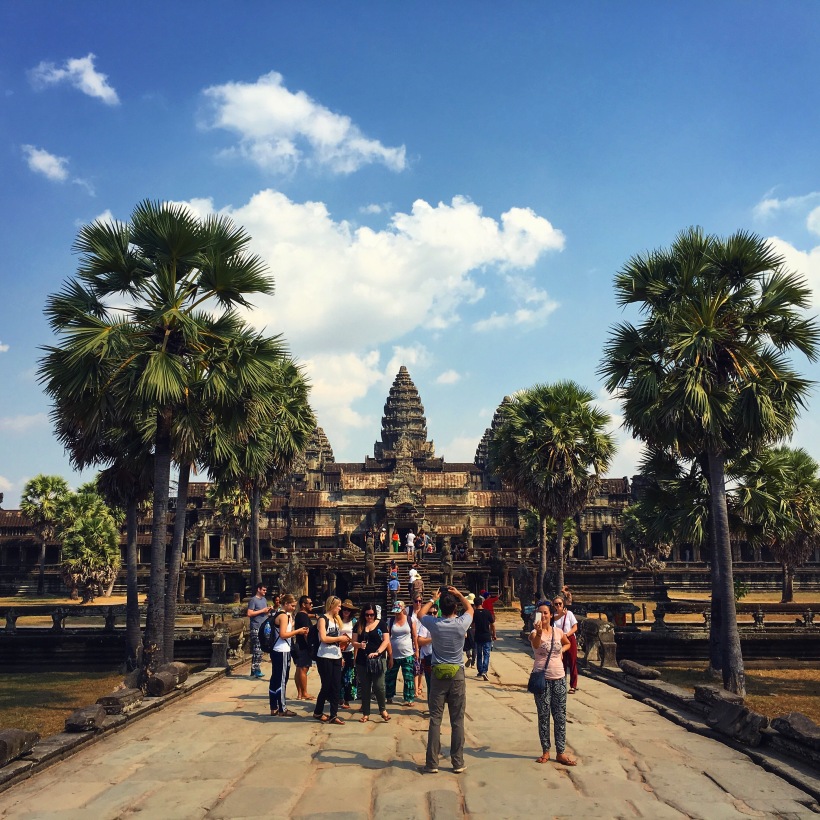With temperatures climbing above 33 degrees Celsius (93 Fahrenheit), January marks the start of Cambodia’s tourist “high season.” In Siem Reap, the effect can be a human traffic jam as visitors —clumped into groups around their Turkish, Israeli, Korean, or Chinese tour guides— clamber over one another for pictures of the city’s stunning (and still crumbling) archeological sites. Mobile phones, GoPros, and too-pricey-for-amateur digital cameras glint in the afternoon sun.
Joining this pilgrimage today, I turned to my wife —who had traveled here years earlier— and asked if the surroundings brought back any memories. “You see so many images [of these historic sites] it is hard to know which ones are remembered, and which aren’t,” she said, glancing briefly at a name-tagged tour group, each member with a camera in hand.

Criticizing the shutterfly sightseer can seem dangerously hypocritical, of course. I, too, carry my camera at a finger’s reach. But watching other paying invaders queue for the chance to freeze their faces amidst these historic backgrounds, prompted reflection. Photographs are cherished for capturing the beauty of time and space. The image’s very existence was proof the photographer was there. So why the need to graft oneself into that landscape?
In 1859, the French naturalist and explorer, Henri Mouhot, had been exploring the tributaries of the Mekong River in Siam (Thailand) when a series of wrong turns, as legend has it, led to his discovery* of the astounding ‘Walled City.’ Years earlier, Mouhot had travelled Europe studying the latest photographic techniques invented by Louis Daguerre. We might imagine an astonished Mouhot, surveying the towering Angkor, wishing he had brought a camera of his own.

Perhaps those times of fevered discovery have come to pass. Today, thanks to images supplied by our digital documentarians —from Instagram to Flickr, through Facebook and Twitter— we can travel wherever we would like with a click of a mouse (or the tap on a screen). And perhaps it is this actuality that now stirs, in today’s voyagers, a hunger to prove that actual people, and not only their imagination, can travel this world.
*As history would have it, said “discovery” is a little more complex, with Portuguese and Japanese explorers having (likely) visited Angkor Wat prior to Mount’s arrival. However, history has privileged Mouhot’s role in announcing Angkor Wat to Europe and the world.
